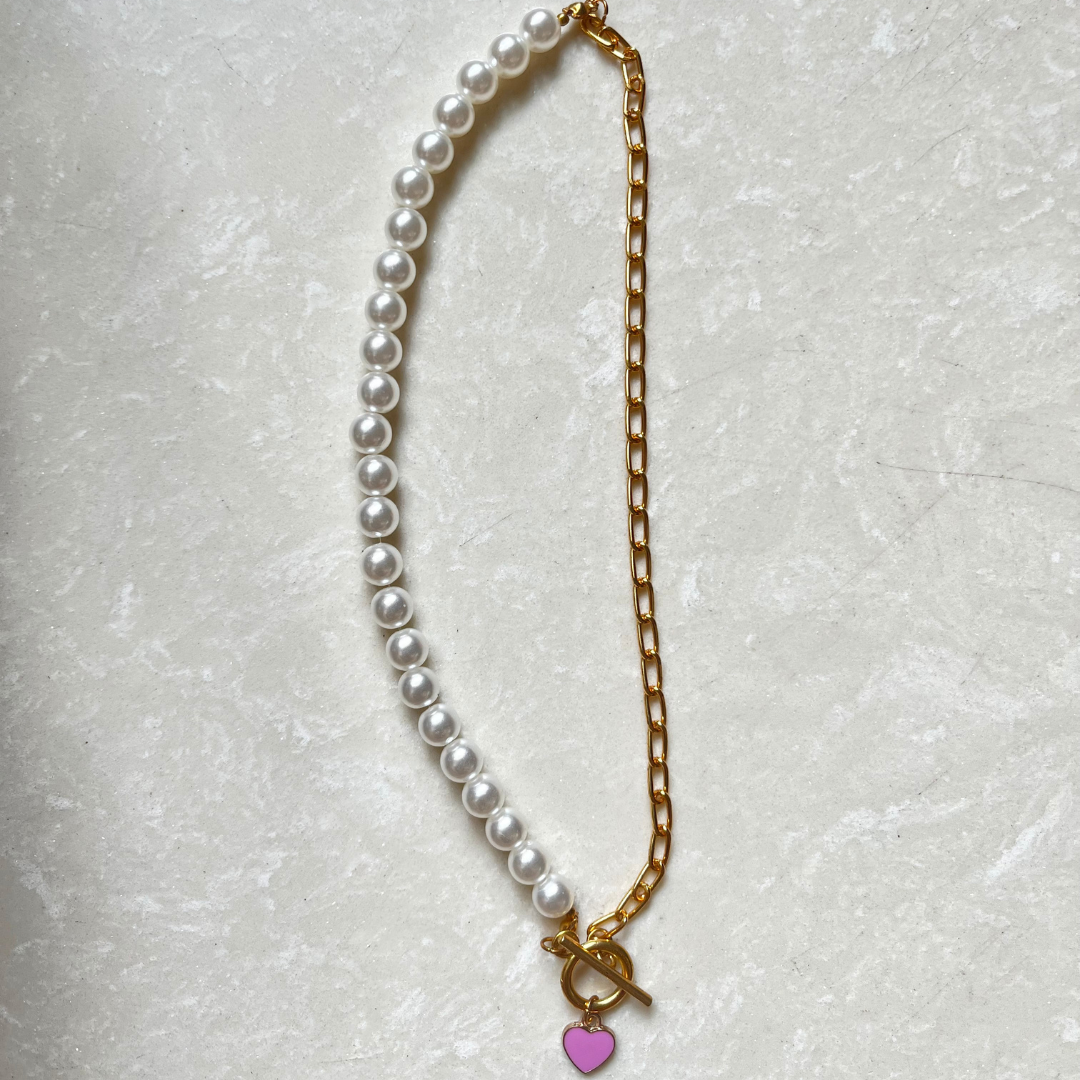Jewelry can be a fantastic way to express personal style, but when it comes to wearing it in a professional setting, subtlety and appropriateness are key. The right pieces can enhance your outfit and project a polished image, while the wrong choices can distract or even send unintended messages. This guide will cover the essential do's and don'ts of wearing jewelry at work, so you can strike the perfect balance between style and professionalism.
Understand Workplace Culture
Every workplace has a unique culture, and understanding it can guide your jewelry choices. In some environments, such as corporate finance or law, jewelry is typically understated and minimal. In creative or fashion-oriented industries, however, there may be more flexibility for bold accessories. Observing your colleagues and tuning into your workplace norms can help you navigate these choices effectively.
On the flip side, if you're in a creative industry, you've got more freedom to express yourself. Bold necklaces or statement rings can showcase your personality without crossing any boundaries.
However, even in more relaxed atmospheres, it's important to make sure your accessories don't distract from your work or overwhelm your outfit.
Consider Your Role
Your role within the organization also impacts what is considered appropriate. Senior executives and customer-facing roles may be expected to project a more conservative image, with simple, classic jewelry choices. Entry-level positions or roles in creative departments may offer more leeway for trendy or statement pieces. Think about the expectations tied to your role and choose jewelry that aligns with how you want to present yourself in that position.
Choose Minimalist Pieces
Minimalist jewelry—think simple studs, thin hoops, small necklaces, and delicate bracelets—tends to work best in professional settings. These pieces can add a touch of elegance without overwhelming your outfit or drawing too much attention. Minimalist jewelry is versatile, pairing well with almost any outfit and keeping your look polished and refined.
Ultimately, the goal is to complement your attire and convey confidence. By selecting minimalist jewelry, you're not just making a fashion choice; you're crafting a statement that aligns with your professional aspirations.
Embrace simplicity, and let your personality shine through these understated yet impactful pieces.
Job Industry Standards
Different industries have varied standards when it comes to work attire, including jewelry. In conservative fields like finance, law, or education, it's best to stick with classic, subtle pieces. In contrast, industries such as fashion, marketing, or media might be more accepting of bold statement jewelry that reflects your personal brand.
Take cues from your colleagues and industry leaders. Observe what works and what doesn't, and let that guide your choices.
While it's important to stay stylish, always prioritize professionalism. Jewelry should enhance your overall appearance, aligning with your role and the expectations of your field.
Company Culture Impact
The company’s culture can heavily influence what is deemed acceptable. For instance, a startup with a casual vibe may be more accommodating of unique jewelry choices, while a traditional, longstanding firm might expect a more conservative approach. Getting a feel for your company’s culture, either through the dress code or observing how others accessorize, will help you make confident choices.
Professionalism and Image
Wearing jewelry that aligns with professionalism can positively impact your image. For example, classic pieces such as pearls, simple chains, and small stud earrings can convey a polished and put-together look. On the other hand, overly flashy or noisy pieces can draw unnecessary attention, potentially affecting how you’re perceived in a professional setting. Aim for pieces that enhance rather than overshadow your professional image.
In creative workplaces, feel free to explore bolder jewelry styles—but always keep harmony in mind. Excessive or overly flashy pieces can shift attention away from your work and may project a less polished image.
Let your accessories amplify your outfit, not compete with it.
Think about the impression your role requires. For leadership positions, choose pieces that exude authority and elegance. In client-facing roles, opt for jewelry that feels approachable and builds trust.
Subtle sophistication often speaks louder than loud statements.
Ultimately, your jewelry should elevate, not define, your professional presence. Stay mindful of the setting and adjust your style to suit the occasion.
Color Coordination Matters
Coordinating your jewelry with your outfit is another do when it comes to workplace jewelry. Neutral tones like silver, gold, white, or pearls tend to be the most versatile and blend seamlessly with typical office attire. Avoid bold or clashing colors, which can be distracting or unprofessional. Instead, go for colors that complement your clothing and contribute to a cohesive look.
When you wear a neutral outfit, feel free to add a pop of color with your accessories. A bold statement necklace or a pair of colorful earrings can bring your look to life without overwhelming your overall appearance.
Consider Occasion Appropriateness
Different work events call for different types of jewelry. While you might stick to classic, understated pieces for a typical workday, work events or team celebrations may allow for slightly more creative expression. Always assess the formality of the occasion, as well as the expectations, to choose jewelry that aligns with the tone of the event.
Avoid Noisy Accessories
Noisy jewelry, like stacked bangles or oversized charms, can be disruptive in a workplace setting, especially in quiet office environments. The sound of clinking bracelets or dangling earrings may be distracting to colleagues and can come across as unprofessional. To keep the focus on your work rather than your accessories, avoid pieces that create unnecessary noise.
Be Mindful of Size
The size of your jewelry can also influence its appropriateness at work. Large, statement pieces can dominate your look and may feel out of place in professional environments. Opt for smaller, more understated jewelry that enhances your style without being the main focal point. By choosing appropriately sized pieces, you can maintain a polished look that balances personal style with professionalism.
Think about the overall vibe of your workplace. In a more conservative environment, subtlety often wins. A delicate piece can convey sophistication, while larger items may be better suited for creative fields.
Keep It Professional
Work jewelry should reflect a polished and professional image. Avoid jewelry with overly personal or novelty themes that may seem out of place in a professional setting. For instance, pieces with playful shapes or pop-culture references are best reserved for casual wear. At work, aim for items that project confidence, respectability, and tastefulness.
Limit Personal Expression
While jewelry can be an expression of personal style, it's best to limit overtly bold or eccentric choices in professional settings. Subtle pieces that add personality without overwhelming your appearance are more appropriate in a workplace environment. Opt for pieces that align with both your style and the professional tone of your work.
Lastly, be mindful of how your jewelry might be perceived by colleagues. While expressing your personal style is important, ensuring that it fits within the workplace boundaries will help you navigate your professional environment successfully.
Assess Company Policies
Some companies have dress codes that include specific guidelines around jewelry and accessories. Familiarize yourself with your company’s dress code policy, as certain organizations may restrict large jewelry, certain types of piercings, or excessive adornments. Knowing and respecting these policies will ensure that your jewelry choices align with company standards.
Conclusion
Choosing the right jewelry for work is all about balance: looking polished, professional, and on-brand for your workplace while allowing your personal style to subtly shine through. By understanding your workplace culture, considering your role, and opting for understated pieces, you can wear jewelry that enhances your professional image. With these do's and don’ts in mind, you’ll be well-prepared to make choices that suit both your style and your career.





